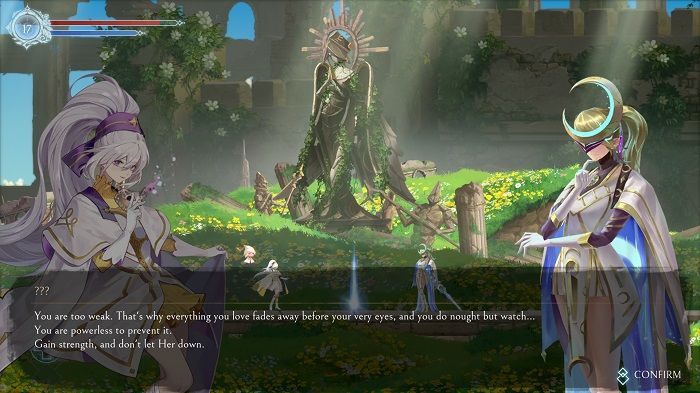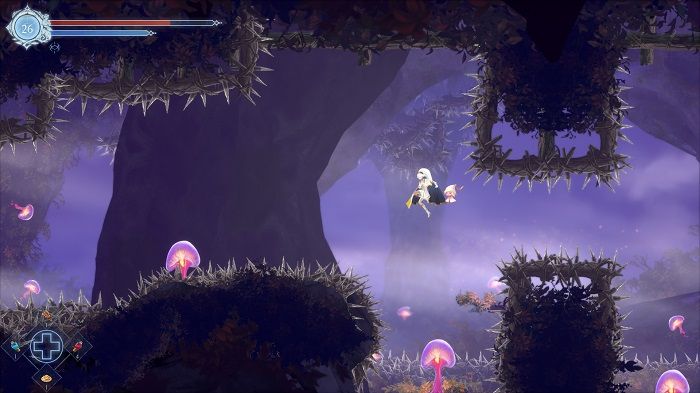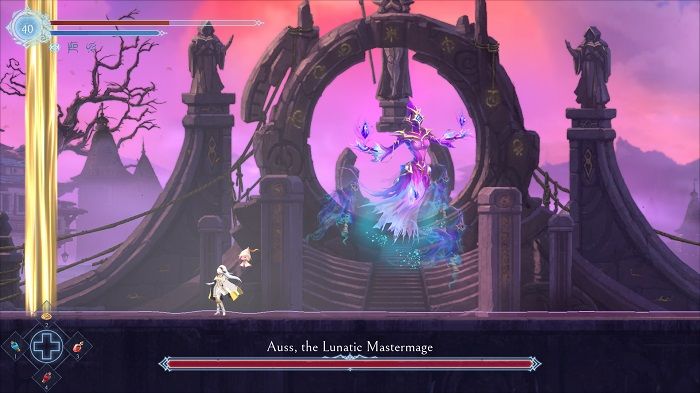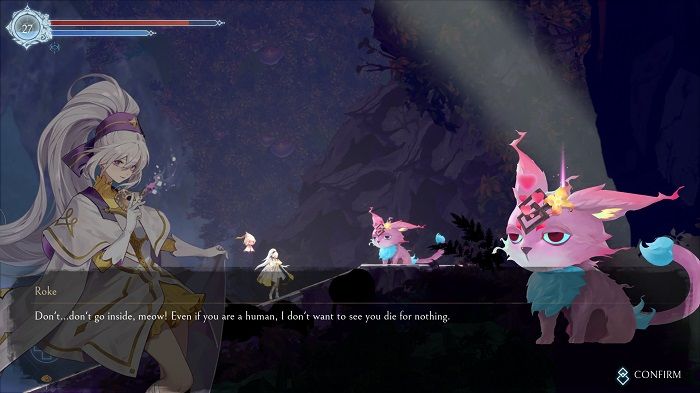Afterimage Review
Afterimage is one of those games that can carry itself with gameplay and visuals alone. The music is nice and the voice acting is charming. But the main appeal of this game is the world of Engardin. And for all its flaws, I had a great time jumping, dashing, and sliding all over the map.
A girl with a gift lives in a broken world that has lost its god. Renee is a mage, trained to subdue the restless dead. After an incident, she learns that she has the power to return from the Stream after death. Soon after, unknown fiery monsters burn down her village. And her mentor’s soul is stolen by a mysterious masked figure. Renee and her flighty companion Ifree set out on a dangerous journey to retrieve the stolen soul.
Good thing Renee can’t stay dead. Unfortunately, she’s stumbled into a plot far above her pay grade. The world is dangerous and shows her no mercy. And even those who share her mission can’t always be trusted. Saving her mentor is going to be much more challenging than she hoped.
A Beautiful, Broken World
Afterimage throws around a lot of proper nouns and historical references right off the bat. And the worldbuilding isn’t set up as clearly as I might like. In short, the game’s writing is nothing to write home about. However, the game makes up for these shortcomings with atmosphere and gameplay. The world of Engardin is stunning, charming, and ominous in turn. Each location is massive and full of hidden secrets. And each map is absolutely gorgeous to explore.

A haunted underground town. A partly-flooded labyrinth of pipes. A dense jungle full of dangerous foliage. Each new level brings more lush fantasy environments to take your breath away. The enemy designs are all distinct and fantastical, too. They also all have unique movement patterns and weaknesses to memorize. And you can’t get away with navigating on autopilot, so you’d better memorize them all.
The character designs are quite charming, too. I’m especially fond of the animals—they all look very whimsical. I’m always a fan of whimsical magic set in a clearly post-apocalypse world. All in all, the art direction is so strong that I think Afterimage would work just as well with no dialog. Characters could communicate in emoticons or images instead and the allure of Engardin would be completely unchanged. 10/10 art, I love it.
Afterimage is Drinking Soulslike Juice
As we mentioned in our preview, Afterimage is a difficult game. Enemies hit hard. Environmental hazards and puzzles are everywhere. And gathering all the shinies means jumping into spikes until you get the timing right. It’s Metroidvania, so the levels are massive and interconnected. As you explore, you uncover various artifacts and abilities that open new options. Some are just convenient, like the loot magnet. Others are required to progress.

Quick travel is linked to a consumable item. This would be forgivable if it was easier to figure out where you need to go to progress. A Metroidvania can be either linear or stingy with quick travel. Being both is incredibly frustrating. Fortunately, you eventually unlock a limited but free version. Afterimage allows you to heal through prayer several times between checkpoints. The number of heals goes up as you explore and gather gems. This is really convenient when you’re exploring new areas and trying to expand the map as much as possible. Which you will need to do because the map only updates between checkpoints.
Unlocking new areas means unlocking new boss fights, and there are many boss fights. Some of the environmental puzzles are practically bosses in their own right, too. Boss difficulty is strangely variable. Some bosses are full-on Soulslike horrors. Others are more classic action/adventure bosses. I was never sure if I was going to spend the next several hours screaming and level grinding or if I was going to glide past in one go. Either way, healing is incredibly important. Keep your potions at hand–some bosses won’t let you pray.

Why is This Game So Linear?
For a Metroidvania, Afterimage is a rather linear experience. You stumble into new areas in a specific order, with backtracking available later. However, the game constantly teases you with glimpses of more dangerous locations. Figuring out how to properly access those areas drives you to thoroughly explore the ones you’ve already found. That said, venturing into a Level 39 area at Level 36 is entirely possible. It’ll be a challenge, but the game won’t stop you the way it will if you try venturing into a Level 60 area at Level 36.

Writing aside, the single biggest issue with Afterimage is that it can be really hard to tell how you’re supposed to progress. I found myself combing over every area I’d unlocked repeatedly. Often, I found the way forward was through an area the game had warned me was too dangerous to properly explore. This was unintuitive because this game is hard. Grueling, even. Environmental hazards lurk behind every corner. And it’s very easy to stumble into a boss arena.
Another complaint I had is that the enemies begin hitting way harder later in the game. Apparently, this issue is being addressed in an upcoming patch, though. And I’m not going to whine about it if it’s already being addressed.
All in all, the world of Afterimage is gorgeous and thrilling to explore. I just wish the game’s storytelling was as compelling as its setting.
***PC code provided by the publisher***
The Good
- Gorgeous world
- Nice sound design
- Great art design
- Slick controls
- Lots of hidden secrets
The Bad
- Linear
- Very hard
- Variable boss difficulty
- Writing isn’t great

